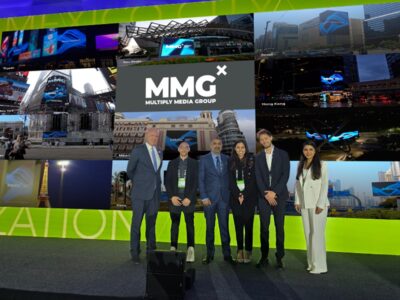User-generated content or UGC refers to several kinds of media that are produced by end-users rather than from traditional mainstream broadcasters and publishers.
This terminology originated from the web with the advent of new technologies commonly known as WEB2.0.
WEB2.0 is simply the definition of new web-based applications such as networking sites, wikies and so on that have as a common ground the mission of building community-driven workspaces whereby the internet is simply a back-end and users play editorial and content management roles.
Unlike Web 1.0, where the internet was intended as a primary source of information, these new technologies promote and encourage the participation of all the communities in building a solid base of information that is reliable because they are ‘independent’ and not connected to any commercial or political source.
[Although] the technical quality of these contributions is not professional, [we can] access a potentially enormous amount of information everywhere at anytime.
Also, all the major IT companies are looking at the web not only as an information repository but also as a production environment; Google has already launched a series of toolsets to produce and share office documents entirely via the web. Likewise, many companies use technologies such as javascript and Ajax to produce web apps that will work with any user regardless of their software/hardare client. For instance, the only way for third party developers to produce applications that can run on the iPhone is writing programmes centered around Safari, Apple’s web browser.
Most of the time, UGC websites have a mix of ‘administrated’ content and user generated content. For instance, in Amazon.com, the sale and transactions section is completely managed by the mother company while the product reviews and feedbacks are independently managed by end users.
Looking at conventional media, the beginning of structured user generated content appearing into a mainstream broadcaster was in 2005 when the BBC received at least 5000 photographs from users witnessing the July bombings in the UK. Similarly, in 2006, the CNN introduced the iReport system whereby citizens could send clips and stills to the station to be showcased during news bulletins.
The technical quality of these contributions is usually not professional but the added value is the possibility to access a potentially enormous amount of information everywhere at anytime. It is interesting to note that the broadcast offer is running towards two completely different directions: on one side, technology is pushing the production of content realised at the highest technical quality possible, from HD TV to Dolby Surround; on the other, broadcasters are not scared of broadcasting a clip from YouTube during their prime time edition of newscast. Of course, there are many pros and cons to utilising user generated media in conventional broadcasting.
Engineered TV content such as news reports, talk shows, or even traditional newscasts are conceived and produced by professional reporters, producers and hosts. The intellectual property, and moral and social responsibilities are entirely upon the broadcasters or the company producing the show. However, what happens in the case of user generated content is still not clear. No one knows how to manage intellectual property in this case.
For instance, if an individual films a live bank robbery with his mobile phone camera and sends the clip to a broadcaster as an MMS, can he claim property rights if the clip is broadcast?
Secondly, credibility is a significant issue especially in news-casting. The value of information is directly proportional to the credibility of the author. There is always the risk of pictures and other form of media being altered or manipulated through editing software. Therefore, the mainstream broadcaster risks its credibility when it publishes a submitted clip as there is no proof of the authenticity or reliability of the source. There are precautions broadcasters can take to circumvent this problem. For one, they can go live with a user generated content only after it is reviewed by experts or post live a content and have the experts comment on it while it is being broadcast.
The first scenario is the safest. However, the content then loses its ‘breaking news’ appeal. The second scenario is more risky as the broadcaster might be going with wrong information.
So far, we have only analysed the new environment, but the true revolution of user generated content is happening on the web.
YouTube is the most popular video sharing website where users can freely upload and distribute audiovisuals across the net.
With a potential audience of 300 million Arabic speakers … it is only a matter of time before a UGC web site becomes available exclusively to Arab viewers.
YouTube, unlike conventional broadcast channels, is simply a platform where videos of the most various sources are posted and grouped in genres through ‘tags’ that can identify the nature of a particular clip and make it easily searchable through YouTube and Google’s search engines.
If on one side, YouTube has been an amazing stage for unknown artistes and multimedia content producers, on the other hand, it has caused more than one problem to the owner (Google) due to the posting of copyrighted material on the website servers. Unlike peer-to-peer applications, where the files are physically shared among users, YouTube transcodes the uploaded clips into Flash Video (and also lately H.264) so that other community members can playback the clip on their PCs without getting a physical copy of the audiovisual. So theoretically, there is no file sharing infringement but at the same time several other copyright issues are violated.
Major companies such as NBC initially started suing Google because copyrighted material was posted on the YouTube website. However, after the suit was filed, NBC realised that all the media buzz around the case was creating a lot of positive publicity for YouTube and negative publicity for NBC so they dropped the suit in favour of a partnership proposal whereby the two companies will promote each other’s businesses and YouTube will broadcast specific content produced by NBC.
Other media giants such as EMI Sony, BMG and CBS are also working out similar agreements to provide content to YouTube. “If you cannot beat them, join them” seems to be true in this case.
YouTube is one of the most popular players in this area but not the only one. Current TV is a similar project and looks and feels exactly like a TV channel.
Quoting a statement placed on its home page “Current TV is a global television network that gives an opportunity to create and influence what airs on TV”.
The website is perhaps the most advanced WEB 2.0 portal, where audiovisual content resides along side a blog, a polling system and even a training centre with resources on how to produce content for broadband.
Founded in 2005, Current TV is an independent cable and satellite television network aimed at young adults. Catering to the short attention span of the 18-34 year-old set, shows on Current are delivered in pods, which are short segments that are generally under ten minutes in length (and usually not much longer than five). In March this year, Current TV surpassed a global reach of 50 million homes when it launched in the UK on BSkyB.
In the Middle East, there is already a lot of interest in content produced by end users. ShoofTV was the first example of a community-based short film festival and it was a good first attempt. Al Arabiya already reserves a section of its website for clips and videos uploaded from users.
With a potential audience of 300 million Arabic speakers throughout the world, it is only a matter of time before a true WEB 2.0 engineered user generated content website becomes available exclusively to Arab viewers. Perhaps then we will be able to answer one of the most tricky questions since the beginning of TV transmissions: Is the TV content we have now what people really want or is it what a minority thinks the rest of the world wants?
Giorgio Ungania is corporate training and marketing manager of SAE international. He can be reached at [email protected]







